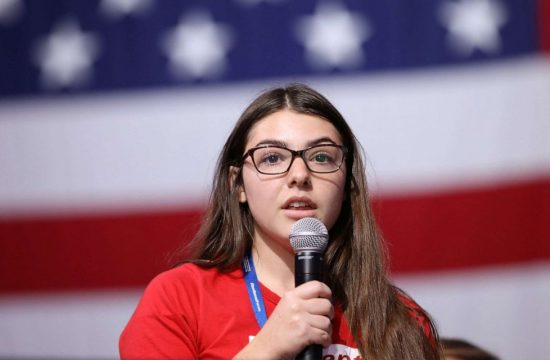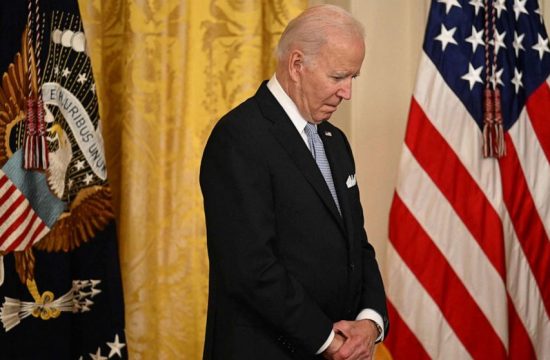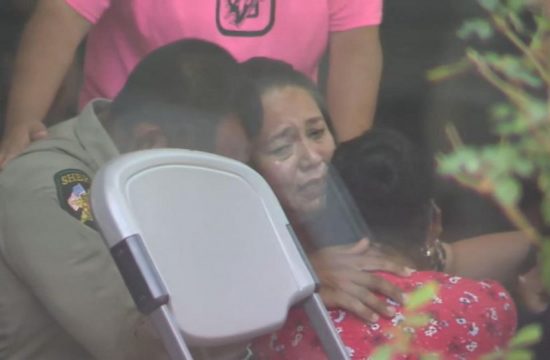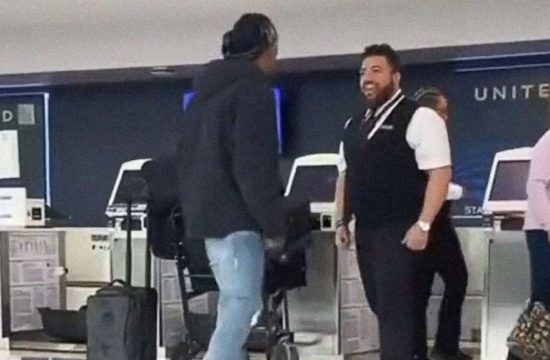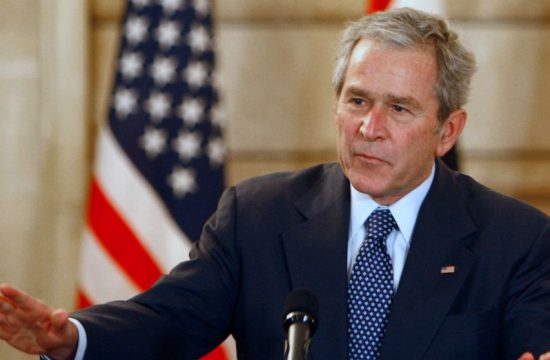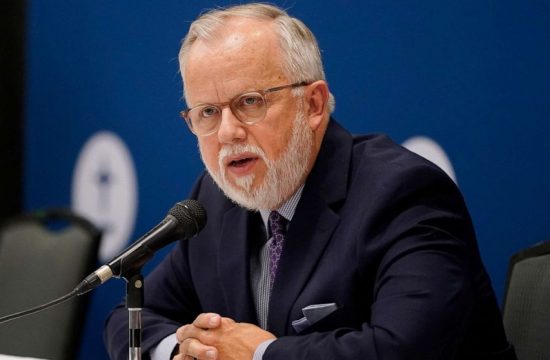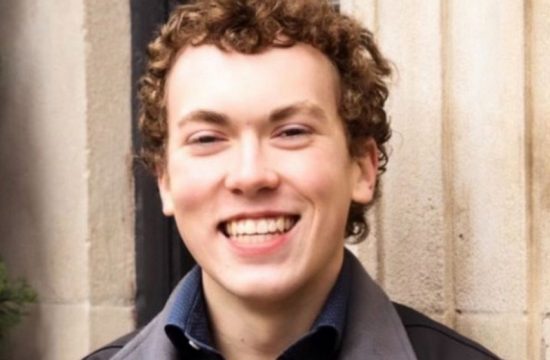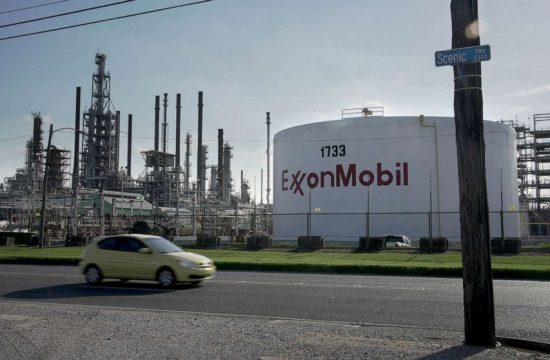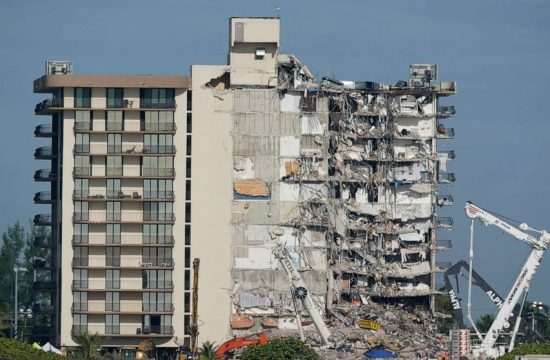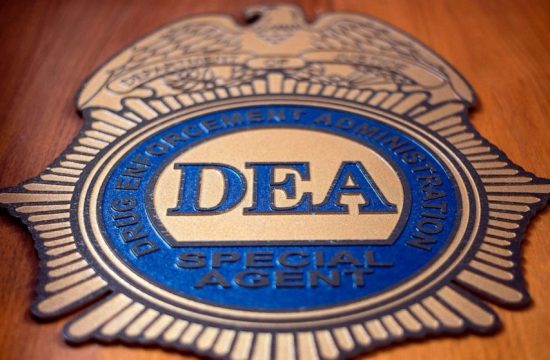The COVID-19 pandemic has decimated the U.S. economy, forcing many businesses to shutter, at least temporarily, and others to drastically change the way they do business.
But one company that appears to have emerged unscathed and emboldened is the online shopping behemoth Amazon, capitalizing on the shift to a delivery economy.
As most of the country has been asked to stay at home, there has been an online shopping extravaganza and demand for delivery has skyrocketed. In a time of mass furloughs and layoffs (some 30 million have filed for unemployment since the virus struck), the company announced it was hiring some 175,000 people — and paying them more than double the federal minimum wage.
Moreover, in the midst of the pandemic, Amazon’s stock reached an all-time high, closing at $2,410.22 a share on April 24. While the S&P 500 stock index has fallen almost 15% since mid-January, Amazon’s shares gained more than 24% over this period. And late last week, the company announced quarterly net sales of $75.5 billion in the first three months of the year alone.
Tune into ABC at 1 p.m. ET and ABC News Live at 4 p.m. ET every weekday for special coverage of the novel coronavirus with the full ABC News team, including the latest news, context and analysis.
Yet the company’s handling of the COVID-19 crisis has generated some controversy. Some warehouse workers have organized a handful of high-profile walkouts, saying they didn’t feel safe, and one of the prominent organizers of the protests was later fired.
The workers’ demands have garnered the attention of more than a dozen state attorney generals and a handful of lawmakers, who called on Amazon to do more to protect workers. The company, for its part, maintained that it is distributing safety equipment for workers and is planning to reinvest its quarterly profit into COVID-19 response.
“The human cost is priceless,” Christian Smalls, 31, who worked at Amazon in New York for five years before he says he was abruptly fired as he led protests over the company’s handling of the COVID-19 outbreak, told ABC News. “They put a price on people’s lives.”
Derrick Palmer, 31, who currently works at an Amazon facility in the greater New York City Area, told ABC News that in this pandemic, while Bezos — who has become the wealthiest man in the world since founding the company in 1994 — is “getting richer, his employees are getting sick.”
“It’s not really about the money, it’s really about the health and safety of his employees,” Palmer added. “That needs to be taken more seriously.”
Protesters: ‘Putting profits above people’
It is unclear how many of the hundreds of thousands of workers employed by Amazon have gotten sick or died during the pandemic. According to the New York Times, there have been cases in more than 50 facilities and the first warehouse worker died at the end of March in California.
Just this week, an Amazon warehouse worker at the New York City facility where Smalls worked died of complications from COVID-19.
“We are deeply saddened by the loss of an associate at our site in Staten Island, NY. His family and loved ones are in our thoughts, and we are supporting his fellow colleagues,” Rachael Lighty, an Amazon spokesperson, told ABC News in a statement.
The employee was last onsite on April 5. Amazon said they are in touch with the person’s family and offering support to them and counseling to fellow employees.
In an April 8 letter to Amazon, a coalition of lawmakers including Sens. Cory Booker, D-N.J., Robert Menendez, D-N.J., Sherrod Brown, D-Ohio, Richard Blumenthal, D-Conn., and Kirsten Gillibrand, D-N.Y., said that workers claimed personal protective equipment was in short supply at the Staten Island facility where Smalls worked.
“Workers at other Amazon facilities have said essential supplies like hand sanitizer and disinfectant wipes are being rationed, and at times are wholly unavailable,” the senators wrote.
“Any failure of Amazon to keep its workers safe does not just put their employees at risk, it puts the entire country at risk,” the senators wrote.
The lawmakers also expressed outrage at Smalls’ firing and a leaked memo that alleged top executives were organizing a “smear campaign” against him, describing him as “not smart or articulate.”
Smalls said he believes he was fired in retaliation for his organizing efforts at the company, which Amazon has vehemently denied. An Amazon spokesperson told ABC News that Smalls was fired for violating safety procedures and social distancing guidelines after he came in close contact with someone who tested positive for COVID-19.
In a March letter, a group of 14 states attorneys general also took issue with the paid sick leave policy at Amazon, which only extended to those diagnosed with COVID-19 or placed into quarantine.
“By limiting paid sick leave to only those employees who have been diagnosed with COVID-19 or who have been placed into quarantine, the Companies are placing their other employees, their customers, and the public at large at significant risk of exposure to COVID-19,” the letter stated.
The company has said that two weeks of paid sick time off is in addition to other paid and unpaid time off options, stating on its website that, “If any team members are unable or unwilling to work a scheduled shift, they can use paid or unpaid time off options, and we are supportive if someone chooses to stay home.”
Smalls said he believes there is massive inequality at the company and that it has only been exacerbated in times of crisis.
“What these CEOs are failing to realize is that they are allowing your workforce to get sick and possibly die because you want to make sure that you’re still thriving during a pandemic, financially,” Smalls said. “That’s putting profits above people.”
Amazon, however, claims it is leading in safety and benefits for employees, deploying more than 100 million masks, adding 5,765 janitorial staffers and adding nearly 2,300 hand-washing stations.
“We urge others to compare the safety, pay and benefits measures we have taken for employees against others,” Lisa Levandowski, an Amazon spokesperson, told ABC News in a statement. “Whether it’s temperature checks, getting masks to all employees and partners, to gloves, procuring necessary cleaning supplies, to moving fast to shift social distancing in our sites, we have aggressively worked to ensure the safety of our teams.”
In a statement announcing its quarterly earnings last Thursday, Bezos said he expects to spend Amazon’s entire quarter 2 profits on the company’s coronavirus response.
“Under normal circumstances, in this coming Q2, we’d expect to make some $4 billion or more in operating profit,” the CEO said in a statement last Thursday. “But these aren’t normal circumstances. Instead, we expect to spend the entirety of that $4 billion, and perhaps a bit more, on COVID-related expenses getting products to customers and keeping employees safe.”
He added that this includes PPE, enhanced facility cleaning, and “hundreds of millions to develop our own COVID-19 testing capabilities.”
“There is a lot of uncertainty in the world right now, and the best investment we can make is in the safety and well-being of our hundreds of thousands of employees,” Bezos said.
Hitha Herzog, an industry analyst and chief research officer at investor data firm H Squared Research, told ABC News that Amazon’s pledge to reinvest its profits to respond to the pandemic is unheard of.
“While I can appreciate people protesting, and it’s certainly everyone’s right to protest, it seems to me from a company standpoint and an executive standpoint, they are doing the right thing by reinvesting the profits into the company,” Herzog said.
“I haven’t heard another company on their earnings call say we’re going to take our entire profit of Q2 and reinvest it so that they are COVID-19 compliant,” she added.
Herzog said the gaps in Amazon’s COVID-19 response for workers were likely due to a lack of authoritative information about the pandemic early on.
“At the beginning, the issue was no one really understood what was going on, is this a flu that is going to pass? Or is this the deadly disease that we are seeing right now,” she said. “I think that’s why we saw these companies very slow to make any of these moves, nobody was getting the information that they needed.”
Herzog maintains that it’s not out of charity or goodwill, however, that Amazon should take care of its workers: it just makes business sense.
“If you as an employer can’t take the basic steps to protect your workers, there is something very wrong with your business model,” she said. “It makes complete business sense to take care of their workers.”
‘Why should we be putting our lives at risk for these nonessential items?’
Smalls and Palmer said one issue they had about working at Amazon in the midst of the health crisis was that they felt they weren’t just packaging and shipping “essential products” and that there was no way to make the facility safe.
Smalls said that while his facility was packaging some groceries, toilet paper, and other so-called “essential goods” they were mostly selling sex toys, DVDs, video games, cosmetics, clothing items and of course “Amazon-owned products,” such as “Echoes, Dots, Fire sticks.”
“Why should we be putting our lives at risk for these nonessential items?” Smalls said. “We did not sign up for this. This is not in our job description. We should have the option of whether we want to put our lives at risk.”
Levandowski, of Amazon, told ABC News that the company is “not stopping or slowing down orders where we already have stock and where those orders do not prevent us from shipping priority items.”
“Regardless of the item being shipped, our safety measures continue to apply including social distancing, temperature checks, increased cleaning at all facilities, and provision of personal protective equipment like masks,” she added in a statement.
Palmer told ABC News that, “if we are considered essential workers, then our health needs to be considered essential as well.”
Palmer added that if there was one thing he would tell Bezos, “I would just tell him to treat his essential workers the same way he treats his customers.”
“They have a model of customer obsession, so we need employee obsession as well,” he said.
Herzog told ABC News that ultimately in situations like this, consumers have a lot of power to wield.
“If you don’t like the way a retailer is handling the way they are treating their workers, go to a different retailer,” she said.
“Amazon did a very good job of integrating into our lives and our psyche that they are the only company out there,” she added, but added that this is not true.
The worker protests have also led to a reckoning for some inside Amazon, and one former VP at the company announced Monday he, “quit in dismay at Amazon firing whistleblowers who were making noise about warehouse employees frightened of Covid-19.”
Tim Bray, a VP and distinguished engineer at Amazon Web Services, wrote in a public post explaining his resignation that he believes Amazon response that “they are prioritizing this issue and putting massive efforts into warehouse safety.”
But he said it’s a much bigger issue and further action isn’t just needed from Amazon.
“And at the end of the day, the big problem isn’t the specifics of Covid-19 response,” he added. “It’s that Amazon treats the humans in the warehouses as fungible units of pick-and-pack potential. Only that’s not just Amazon, it’s how 21st-century capitalism is done.”
“If we don’t like certain things Amazon is doing, we need to put legal guardrails in place to stop those things,” Bray said. “We don’t need to invent anything new; a combination of antitrust and living-wage and worker-empowerment legislation, rigorously enforced, offers a clear path forward.”


